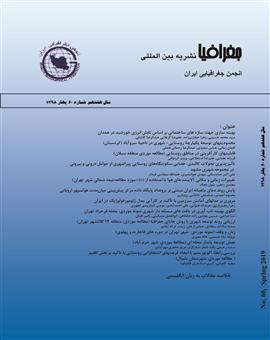زنان و وقف (نمونه موردی : شهر تهران در دوره های قاجاریه و پهلوی)
محورهای موضوعی :پروانه شاه حسینی 1 , هاله معیری 2
1 - سمت
2 - علوم و تحقيقات
کلید واژه: زنان واقف مالکیت مشارکت اجتماعی قاجاریه و پهلوی تهران AHP,
چکیده مقاله :
مشارکت و فعالیتهای داوطلبانه افراد در رتق و فتق امور مختلف به ویژه در امور حمایتی و فقرزدایی، همواره بخشی از فعالیتهای بشر را به خود اختصاص داده است. موضوعی که فراهم آورنده پايداري و بقاي نظم و انسجام اجتماعي و به تبع آن تنظيم اجتماعي است. یکی از راه های مشارکت اجتماعی، وقف است که گروه های اجتماعی از جمله زنان با انگیزه های مختلف، بدان مبادرت میورزند. هدف این تحقیق بررسی چگونگی مشارکت زنان شهر تهران در امور اجتماعی از طریق وقف در دورههای قاجاریه و پهلوی است. روش تحقیق از نوع اسنادی-توصیفی است. جامعه آماری تمام زنان واقف شهر تهران در دوره های مورد بررسی است که اطلاعات آنها در دسترس می باشد. اطلاعات وقفی زنان واقف شهر تهران از منابع معتبر جمع آوری و با استفاده از روش های آماری و مدل AHPتحلیل شده است. یافتهها نشان میدهد که زنان شهر تهران با داشتن حق مالکیت بر اموال خود و استقلال مالی امکان مشارکت در امور اجتماعی را برحسب گرایش خود داشته اند. هرچند در هر دو دوره مورد بررسی، وقف مذهبی جایگاه بالاتری را نسبت به اهداف دیگر داشته، در دوره قاجاریه بخشی از توسعه و عمران شهر تهران با عمل به وقف محقق می شده است. نوع مکان های وقفی با طبقه اجتماعی واقفان ارتباط نزدیکی دارد. از این رو از آنجا که اکثر زنان واقف شهر تهران در دوره قاجاریه عمدتاً از طبقه اشراف و اعیان بوده اند.، بیشترین مکان وقفی آنها تجاری با گرایش به دکان است، که در دوره پهلوی با جایگزینی طبقه متوسط به مسکونی با گرایش به خانه تغییر کرده است.
People's voluntary contributions and activities to manage various affairs, especially in supportive affairs and poverty alleviation, have always been a part of human activities. Endowment or vaqf is one of the ways of social contribution that social groups, including women, are engaged in. The purpose of this research is to identify how women in Tehran participated in vaqf-related social activities during the Qajar and Pahlavi periods. The research method is documentary-descriptive. The statistical population includes all the endower women of Tehran city in the studied periods whose information is available. The vaqf-related data of these endower women were collected from valid sources, and were analyzed using statistical methods and AHP model. The findings show that the women of Tehran, having the right to own property and financial independence, have had the opportunity to participate in social affairs according to their tendency. Although in both studied periods, the religious motivation for vaqf had a higher position than other motivations, during the Qajar period, part of the development and Construction process of Tehran city has been accomplished through vaqf. The type of endowment sites is closely related to the social class of the endowers. Therefore, since most of the women in the city of Tehran during the Qajar period were mainly from the aristocracy and the lords, their most endowed sites is commercial, with a tendency towards dokan (old small store or shop), which in the Pahlavi era, was replaced with residential sites, especially home.
